Packing Box Item Number: E7836-0 from the National Museum of Natural History

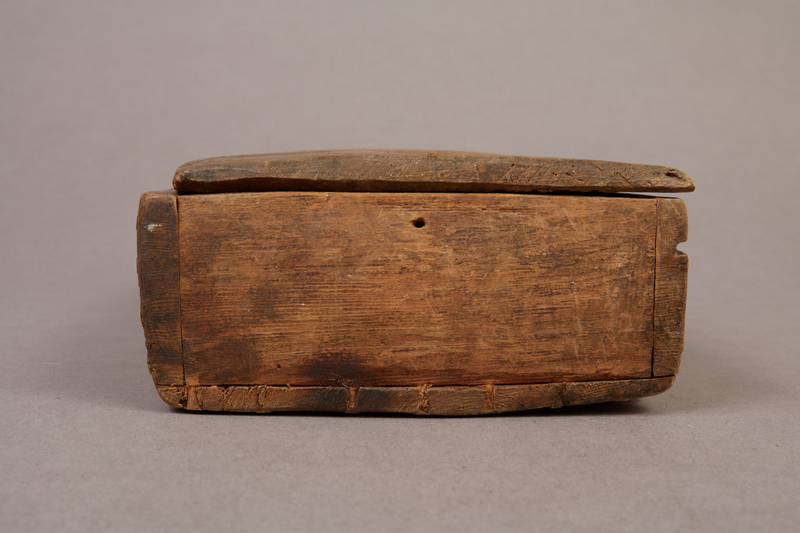
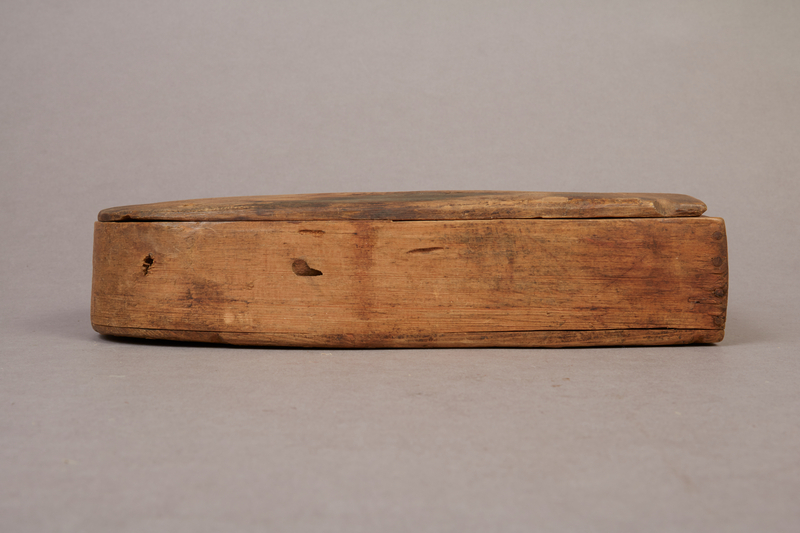
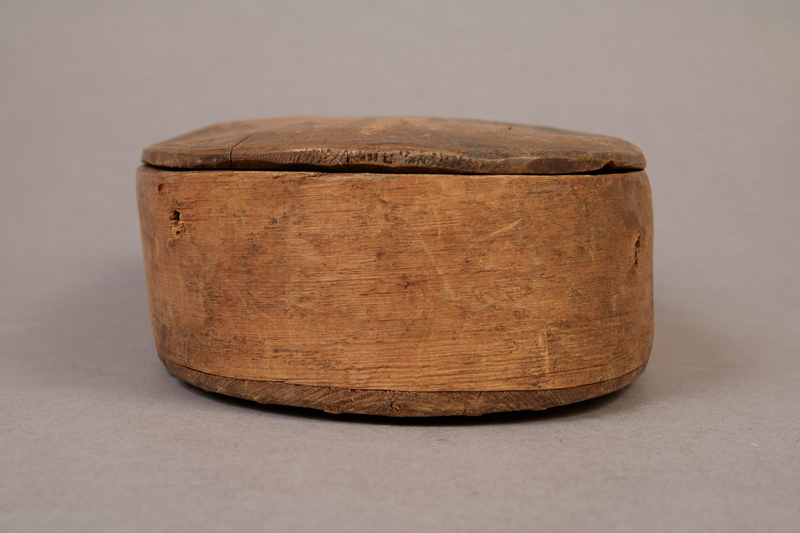
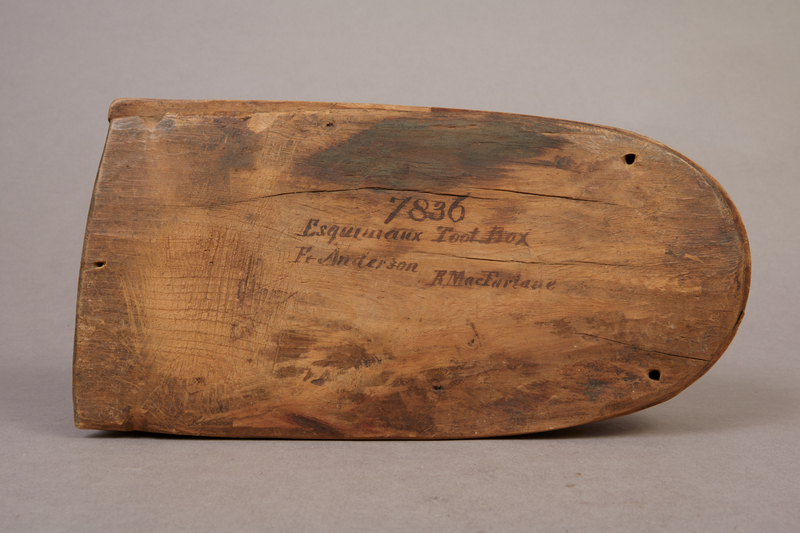
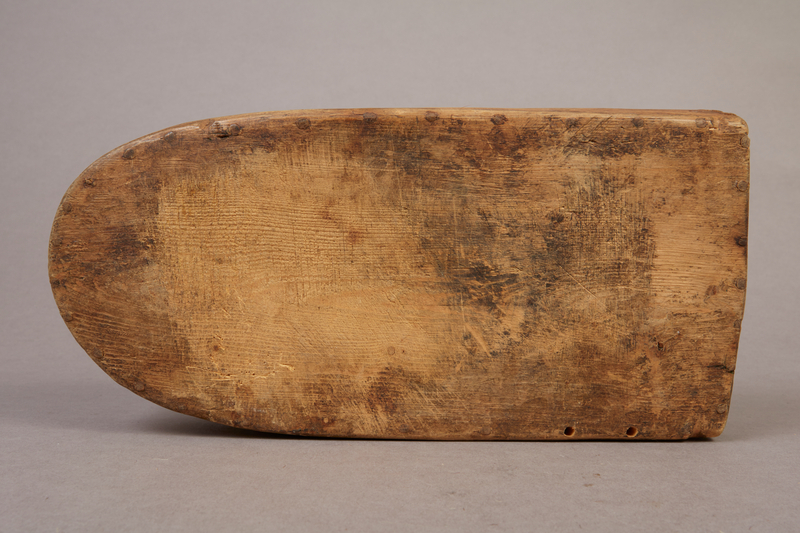
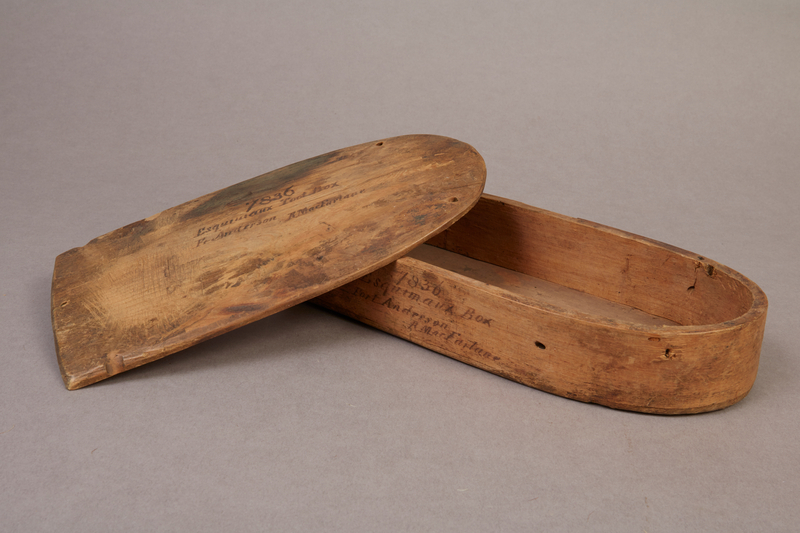

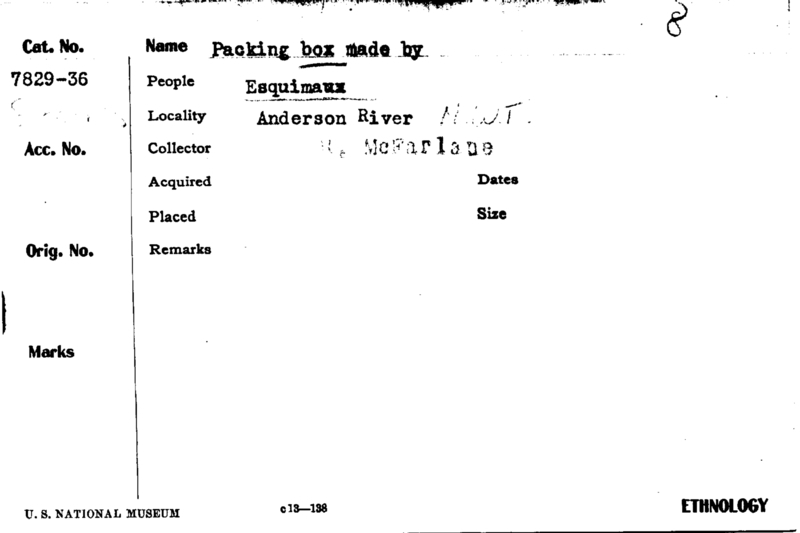

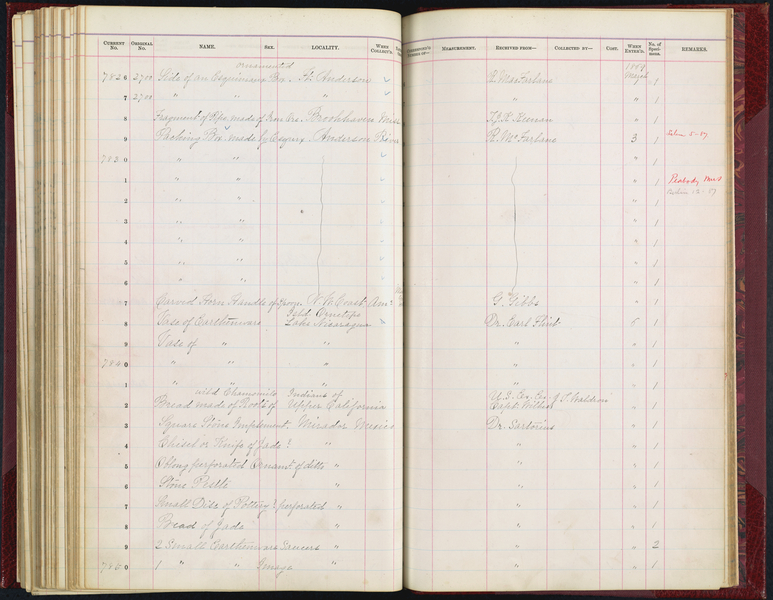
Notes
Box and lid. Though catalogued as a packing box, "tool box" is written on the artifact itself. Card indicates this is Inuit made.Source of the information below: Inuvialuit Pitqusiit Inuuniarutait: Inuvialuit Living History, The MacFarlane Collection website, by the Inuvialuit Cultural Resource Centre (ICRC), Inuvik, N.W.T., Canada (website credits here http://www.inuvialuitlivinghistory.ca/posts/12 ), entry on this artifact http://www.inuvialuitlivinghistory.ca/items/119 , retrieved 2-11-2020: Box made from wood. A long side piece has been bent into a 'U' shape, and has a smaller end piece attached to it with wood pegs. The bottom also is held in place with wood pegs. The lid is loose, but two holes drilled through at an angle near the curved end, and a similar hole at the other end that line up with corresponding holes in the side piece, likely were used for lashing the lid to the side. Grooves in edges of the lid near the straight end that line up with similar grooves on the side piece were probably made to hold a thong that encircled the box. Scratches in the suface of the lid indicate that the box had been used as a cutting board, in addition to being a container. This item is identified in the original Smithsonian Institution catalogue as a 'packing box'; however, the shape follows the traditional design for boxes. More information available here: http://www.inuvialuitlivinghistory.ca/item_types/12: The MacFarlane collection contains a variety of wooden boxes. Boxes carved from single pieces of wood, and boxes with sides made from bent pieces of wood with bottoms pegged to them, are traditional Inuvialuit forms that were used for storing tools and other objects. Boxes with separate pieces for each side, bottom and top identified in the Smithsonian Institution's artifact catalogue as 'Packing Box Made by Esquimaux' may have been commissioned by MacFarlane for packing artifacts that were sent to the Smithsonian.
Item History
- Made in Northwest Territories, Canada
- Collected in Northwest Territories, Canada
- Received from Roderick R. MacFarlane on January 7, 1869
What
- Name
- Packing Box
- Identification Number
- E7836-0
- Type of Item
- box
Who
- Culture
- Eskimo, Inuit and Inuvialuk
- Received from
- Roderick R. MacFarlane
Where
- Holding Institution
- National Museum of Natural History
- Made in
- Northwest Territories, Canada
- Collected in
- Northwest Territories, Canada
When
- Acquisition Date
- on January 7, 1869
Other
- Accession Number
- 69A00012